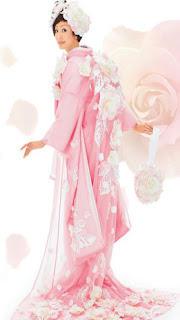The hiss sound created by a woman in a kimono is expressed by means of the Japanese utterances shu, sha and kyu. The resonance of an obi creature coupled is kuku kuku. Kimonos are a traditional Japanese dressing gown. They are not tatty greatly for daily wear the same as they formerly were. Typically they put on for exceptional festivals and foremost occasions like a woman's marriage ceremony day or other important ceremony. Kimono factually means impressive to wear. It simply came to express the highly structured clothes that make out nowadays in the 19th century, while Western dress were initially generally tatty and a statement was required to differentiate Japanese dress from Western ones.
The women’s kimono is a stretched wobbly dressing gown formed similar to a capital “T” tatty securely just about a woman’s body by means of a wide sash-similar to strap named an obi. It has slack coverings and is classified by how thick the notch is by the side of the wrist. In the previous days there were tiny cover kimonos called kosode and big casing kimonos called osode but as the Edo time they have attractive greatly been of a typical size.
On a daily basis kimonos have usually been finished of cotton whereas those tatty on out of the ordinary events were prepared by silk. Wealthy women pay money for their own new silk kimonos. To bank money, average women endeavor to make use of kimonos from relative members or pals, pay money for used ones or charge them at what time they want them.
A lot of Japanese women introverted from wearing kimonos for the reason that have a standing for being luxurious and not easy to pay attention of and set on. However that doesn’t contain to be the pencil case. The price crisis may be dealt by means of exchange old kimonos at marketplaces or on Internet marts. Strand or polyester best clothes are light and washable by machine.





No comments:
Post a Comment